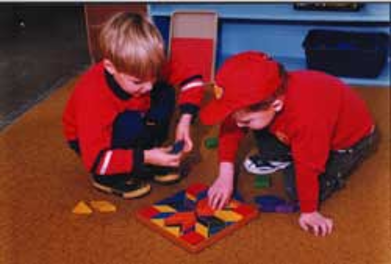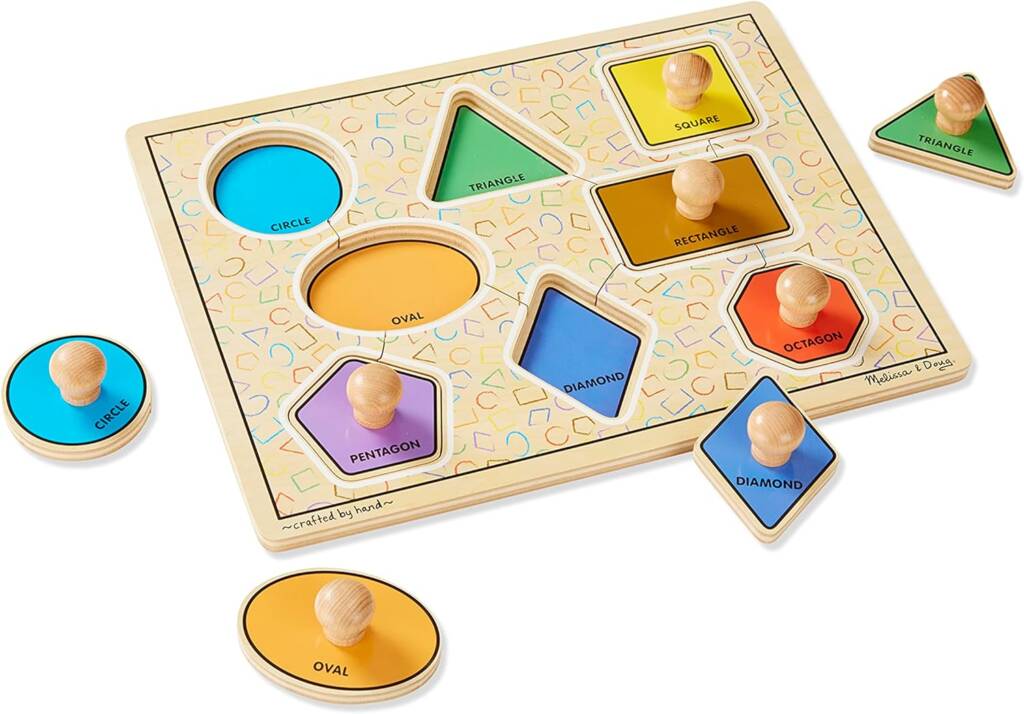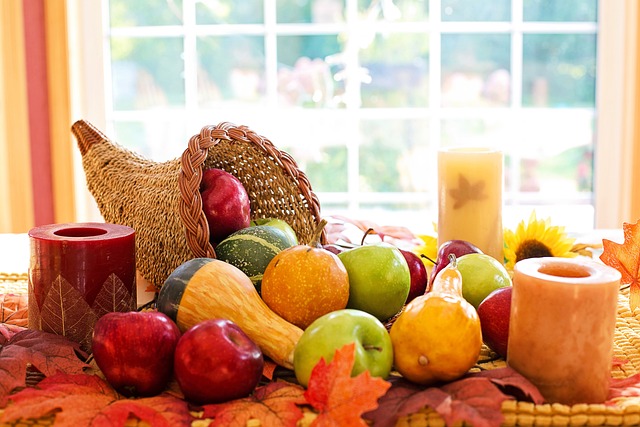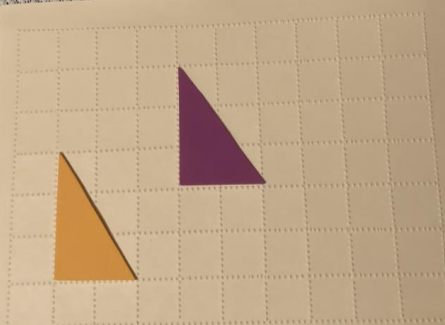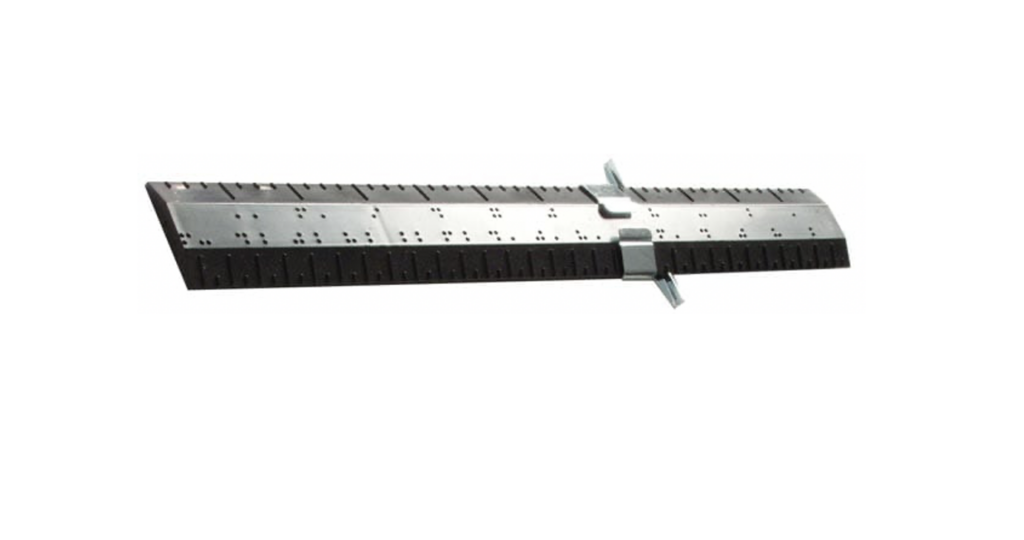Early childhood is when and where children begin to discover that math is all around them. They use, enjoy, and think about math and don’t even realize it. Math activities are embedded in real-life activities and “help children develop language as they ask questions, develop fine motor skills as they touch and move objects, and improve social skills as they work” with parents and others on a problem (Fromboluti & Rinck, 1999). All children develop at different rates. Visually impaired students may need extra time to develop and learn, so it is extremely important that they are given opportunities to participate and learn at an early age. There is a great wealth of information on teaching mathematics in early childhood that is not specific to visual impairment. Nevertheless, many of these activities either need no adaptation or can be easily adapted. Just make sure that the adaptations are appropriate
A Few Early Childhood Mathematics Education Links to Get You Started
- Center for Innovation in Education – Expansion of the Mathematics Their Way book. http://www.center.edu/
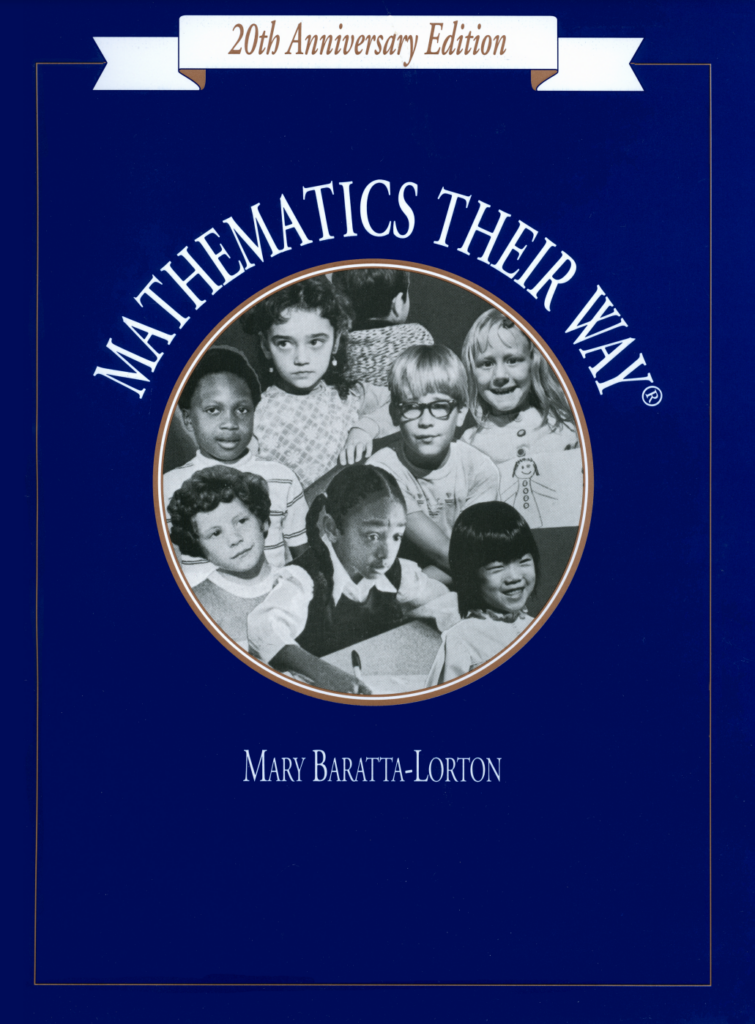
- Eisenhower National Clearinghouse – Articles, curriculum, and professional development resources plus a search engine. http://www.enc.org/
- NCTM Classroom Resources – NCTM Illuminations, Notice and Wonder, and Problems of the Week: https://www.nctm.org/classroomresources/. If you are a member of the National Council of Teachers of Mathematics (NCTM), you can access the Ask Dr. Math Archives at no additional charge: https://www.nctm.org/drmath/. You can also sign up for a free account to access the Dr. Math Archives without being a member. They are no longer accepting new questions.
- National Council for Teachers of Mathematics – Articles, curriculum, classroom, and professional development resources and a search engine. The National Council of Teachers of Mathematics (NCTM) has also developed a set of principles and standards important for teaching and learning mathematics. http://www.nctm.org/
What sort of activities might reinforce the NCTM principles and standards at the early childhood level?
- Read children’s books that rhyme or repeat, contain numbers and tactile pictures, and use multiple senses.
- Sort objects looking for similarities in either color, shape, or size.
- Sort objects looking for differences, like which box is bigger.
- Touch and manipulate containers, blocks, shape sorters, and puzzles.
- Count and become familiar with numbers.
- Share food, chores, or treats by dividing into equal portions.
- Place stickers in columns on a piece of braille graph paper to make a chart of how many of each type of food were consumed during the week.
To implement these activities, parents and teachers can use many items easily found in the home or environment. There are also several sources for early childhood math manipulatives that need no adaptation or are easily adapted (Osterhaus, 2002). However, there are also a few vendors who are making a real effort to invent/locate/adapt math tools specifically for the young visually impaired child. These vendors include (but are not limited to):
- American Printing House for the Blind (APH) http://www.aph.org
- Exceptional Teaching Aids (ETA) http://www.exceptionalteaching.com
- Independent Living Aids (ILA) http://www.independentliving.com
American Printing House for the Blind
On the Way to Literacy Storybooks Illustrated with Thermoforms (molded plastic shapes)
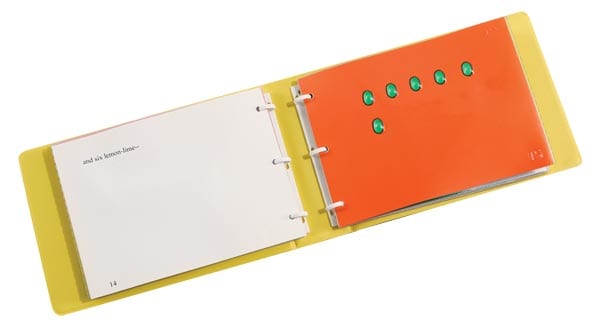
A counting rhyme about a magical jungle filled with jellybeans. From one to ten, the jellybeans appear in rows for easier counting. Scented stickers included.
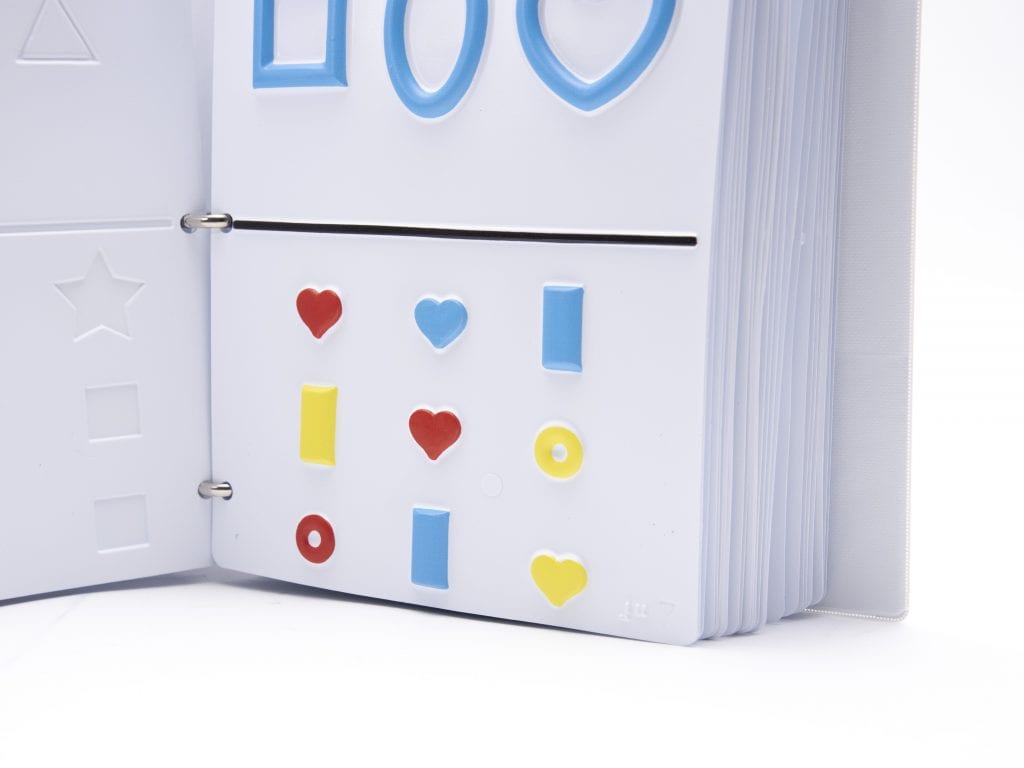
Tactile Treasures consists of 79 thermoformed sheets featuring tactile pictures created from real objects that illustrate math and language concepts. The types of thermoformed objects include pretzels, buttons, rings, zippers, scissors, and shells. In most cases, a concept is presented twice on a single tactile page that is divided by a raised bar, but occasionally an entire page is used to convey a concept.
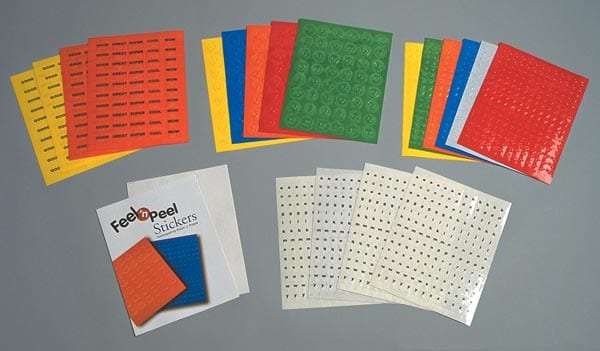
Multi-use tactile/visual stickers
Exceptional Teaching Aids
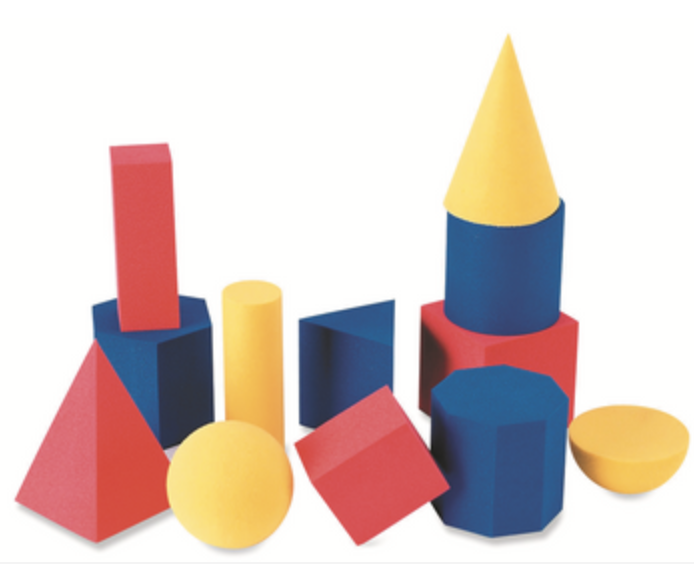
Contains 12 geometric solids: cone, sphere, hemisphere, cube, pyramid, cylinders, prisms, and rectangular solids.
Independent Living Aids
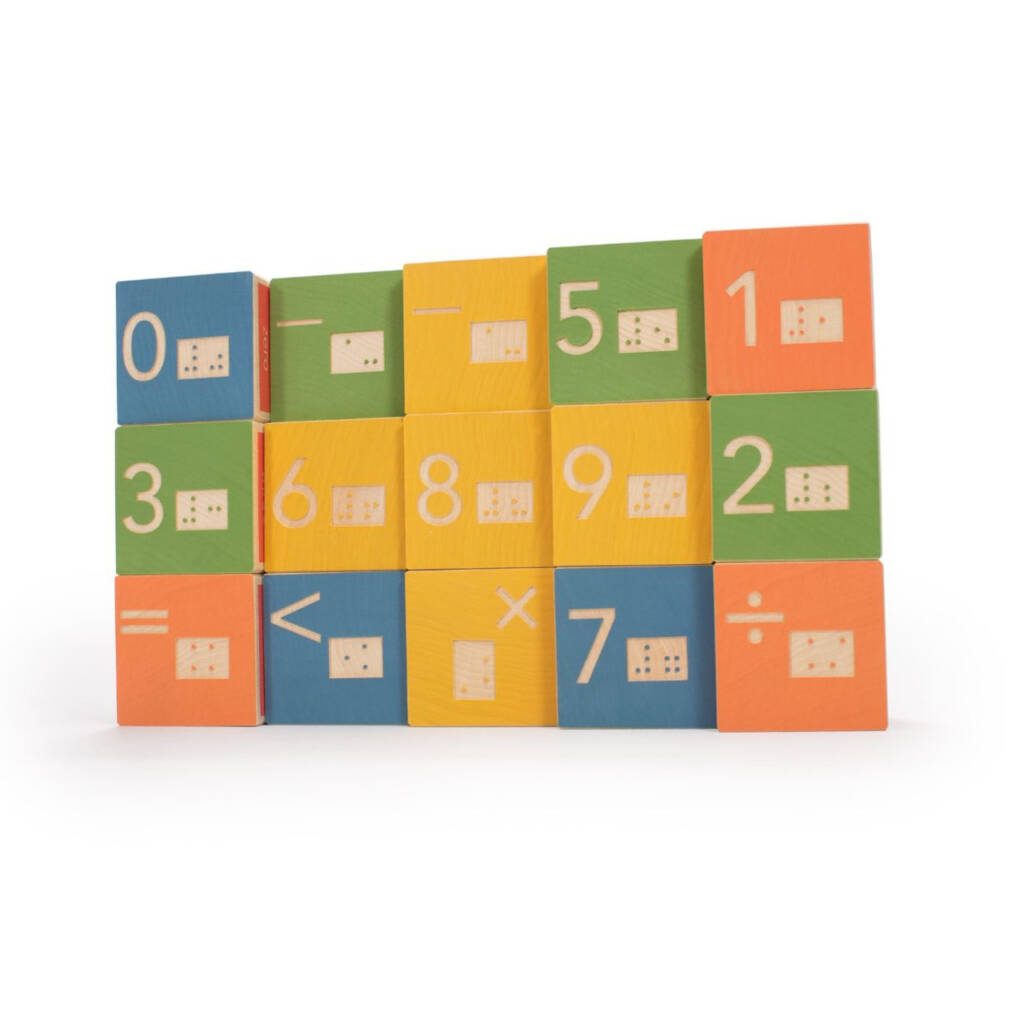
Sixteen colorful wooden blocks with numbers (0 – 9) and plus, minus, and equals signs that are embossed and brailled in Nemeth code. In addition, the corresponding number of recessed circles have been embossed next to the numbers.
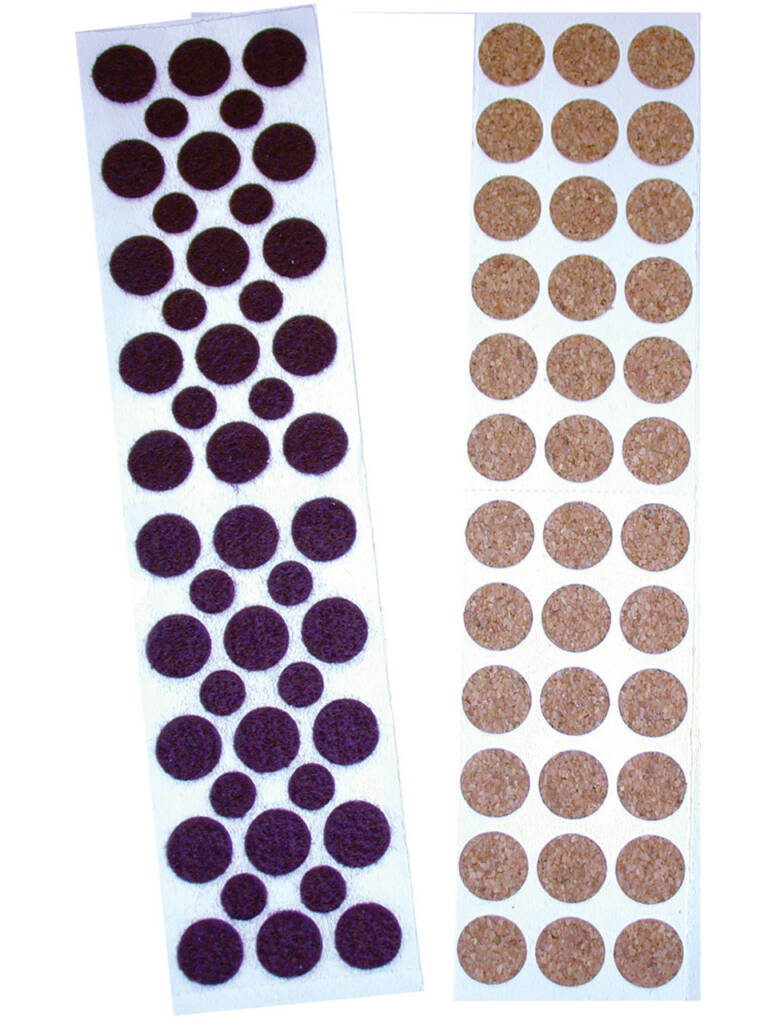
Included are 46 brown felt, and 36 cork round stick ons. The large stick-ons measure .50 inches; the small ones .25 inches in diameter. Since these are not thick, but of different colors and texture, they provide a different approach to marking products.
Other Suppliers
- Geometric Shapes Deluxe Jumbo Peg Puzzle (Melissa and Doug)
References
- Fromboluti, C.S. & Rinck, N. (1999). Early Childhood: Where Learning Begins Mathematics. U.S. Department of Education, Office of Educational Research and Improvement, National Institute on Early Childhood Development and Education [On-line] Available: https://ies.ed.gov/ncee/wwc/PracticeGuide/18
- Osterhaus, S.A. (2002). Susan’s math technology corner: Back-2-school: What’s fun and/or new for little ones. Division on Visual Impairments Quarterly, 48(1), 23-25.
This article was originally published in 2004 in Division on Visual Impairments Quarterly, 49(3), 41-47. Updated in 2024.

